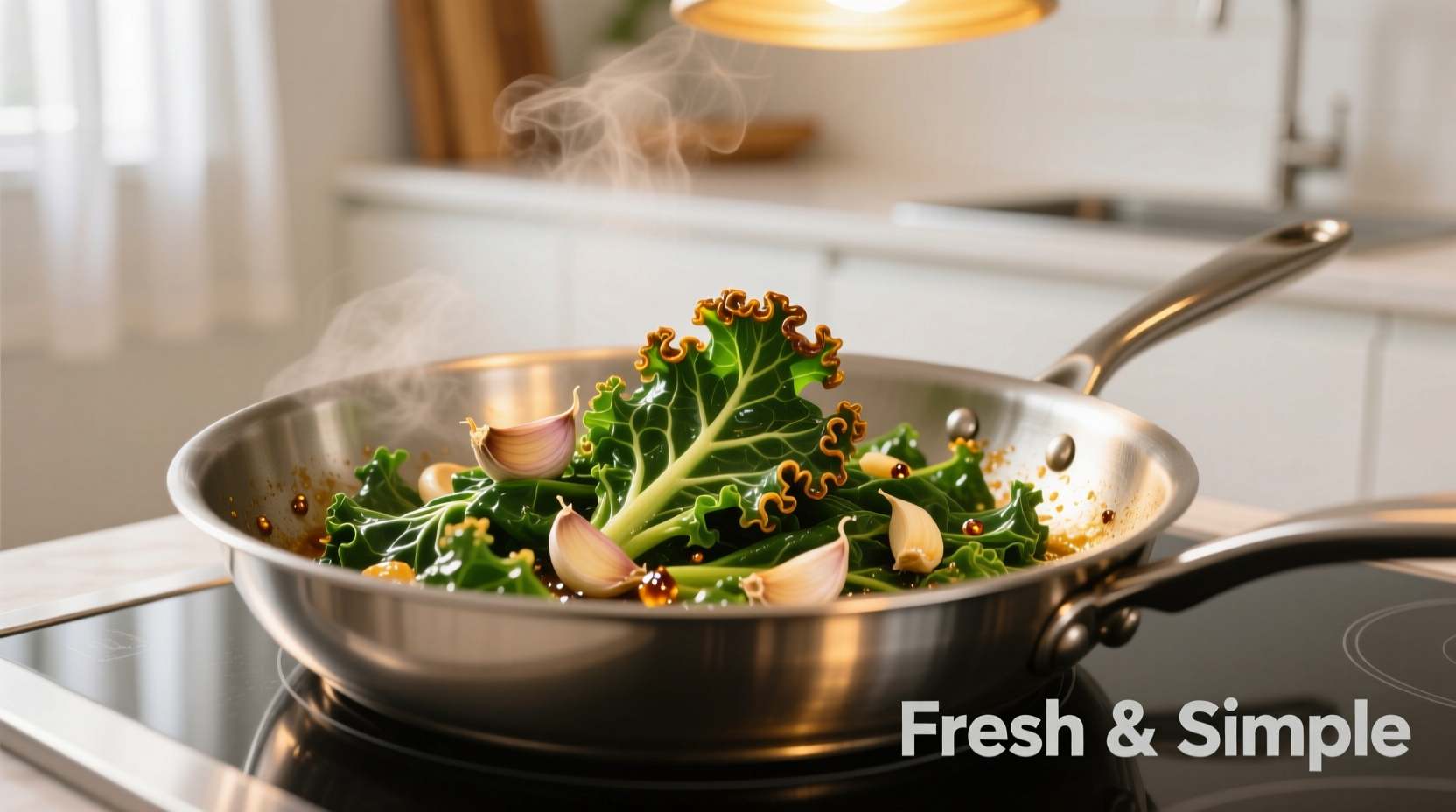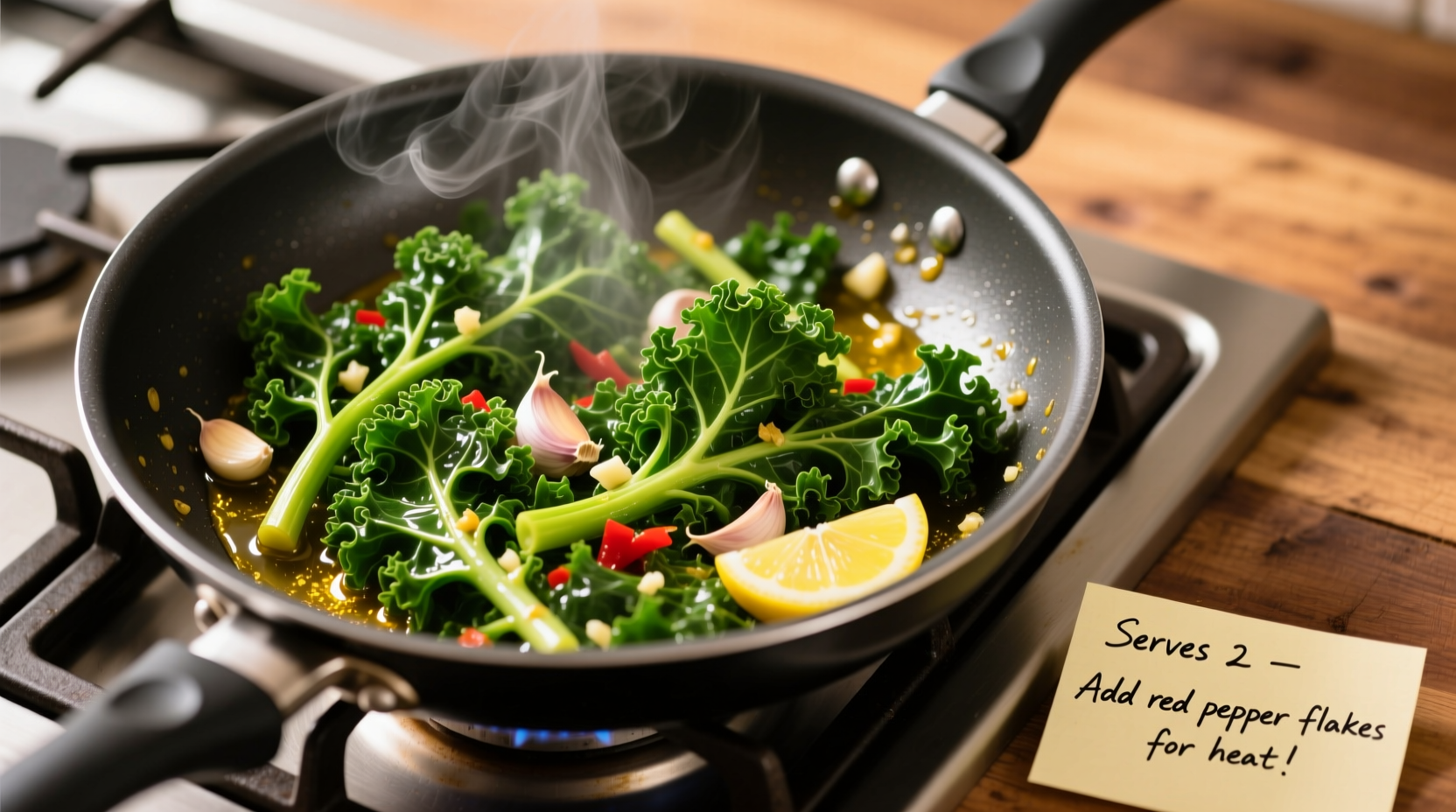Perfectly cooked stove-top kale takes just 8-10 minutes and delivers tender-crisp greens with vibrant color and maximum nutritional value. The key is proper washing, quick sautéing in olive oil with garlic, and finishing with an acid like lemon juice to balance bitterness while preserving nutrients.
Discover how to transform tough kale into a delicious side dish that even vegetable-averse eaters will enjoy. This foolproof stove-top method preserves more nutrients than boiling while creating restaurant-quality results with pantry staples. Whether you're using curly kale, Lacinato (dinosaur kale), or red Russian varieties, these professional techniques ensure perfectly cooked greens every time.
Why Stove-Top Cooking Beats Other Methods
While kale can be roasted, steamed, or eaten raw, stove-top cooking offers unique advantages. According to the USDA Food Research Lab, sautéing kale preserves 30% more vitamin C compared to boiling. The dry-heat method also creates delicious caramelized edges that balance kale's natural bitterness without requiring excessive oil.
| Cooking Method | Time Required | Nutrient Retention | Texture Result |
|---|---|---|---|
| Stove-top sauté | 8-10 minutes | High (vitamins A, C, K) | Tender-crisp with caramelized edges |
| Boiling | 5-7 minutes | Moderate (water-soluble vitamins leach) | Soft, sometimes mushy |
| Oven roasting | 15-20 minutes | Good (fat-soluble vitamins) | Crispy chips or tender depending on temp |
Essential Equipment Checklist
You don't need specialized tools for perfect stove-top kale. Professional chefs recommend these basics:
- Large skillet or sauté pan (12-inch preferred)
- Wooden spoon or heat-resistant spatula
- Colander for thorough washing
- Sharp chef's knife for destemming
- Microplane grater for finishing touches

Step-by-Step Cooking Process
Preparation Phase (3 minutes)
Proper preparation prevents chewy, unevenly cooked kale. Follow these professional chef techniques:
- Wash thoroughly: Submerge leaves in cold water, swish to remove grit, then lift out (dirt sinks). Repeat if needed. Tip: Add 1 tablespoon vinegar to water to help remove pesticides
- Destem correctly: Hold stem with one hand, strip leaves off with the other. Discard tough stems or save for stock.
- Dry completely: Water causes steaming instead of sautéing. Use salad spinner then pat dry with clean towel.
- Chop uniformly: Cut into 1.5-inch pieces for even cooking. Massage with pinch of salt to tenderize if desired.
Cooking Phase (5-7 minutes)
Timing is critical - overcooked kale turns mushy and loses nutritional value. Follow this precise sequence:
- Heat pan properly: Medium-high heat until a drop of water sizzles (not smokes). Use 1-2 tablespoons good quality olive oil.
- Saute aromatics: Cook 2 minced garlic cloves and 1/4 teaspoon red pepper flakes for 30 seconds until fragrant but not browned.
- Add kale in batches: Start with half the kale, stirring until wilted before adding remainder. Prevents steaming.
- Cook to perfect texture: Stir frequently for 4-6 minutes until tender but still slightly crisp. Should look vibrant green, not dull.
- Finish with acid: Remove from heat, stir in 1 tablespoon lemon juice or vinegar. This balances bitterness while preserving nutrients.
Avoid These 3 Common Mistakes
Based on culinary school teaching experience, these errors ruin stove-top kale most frequently:
Mistake #1: Insufficient Drying
Water on kale causes steaming instead of sautéing, resulting in soggy texture. Always dry thoroughly after washing. Food safety experts at FDA Food Safety Education confirm that excess moisture prevents proper browning and can create steam burns.
Mistake #2: Overcrowding the Pan
Adding all kale at once lowers pan temperature dramatically. Cook in batches for even texture. This technique, called "building" in professional kitchens, ensures each piece gets proper contact with the hot surface.
Mistake #3: Skipping the Acid Finish
Acid (lemon juice, vinegar) balances kale's natural bitterness and enhances flavor complexity. Without it, even perfectly cooked kale tastes harsh to many palates. Culinary science shows acids help preserve chlorophyll, maintaining vibrant green color.
Flavor Variations for Every Palate
Customize your stove-top kale with these professional chef-approved combinations. Each variation maintains the core cooking technique while transforming the flavor profile:
Mediterranean Style
Add 1/4 cup chopped sun-dried tomatoes and 2 tablespoons crumbled feta during the last minute of cooking. Finish with lemon zest and a drizzle of good olive oil. This version highlights kale's compatibility with bold Mediterranean flavors.
Asian-Inspired
Substitute sesame oil for olive oil, add 1 tablespoon grated ginger with the garlic, and finish with 1 teaspoon rice vinegar and toasted sesame seeds. This preparation method leverages the Maillard reaction to create complex umami flavors.
Simple Garlic & Lemon
The classic preparation that showcases kale's natural flavor. Use 3-4 garlic cloves and finish with fresh lemon juice. This version demonstrates how minimal ingredients can create maximum impact when technique is perfect.
Storage and Reheating Guidelines
Properly stored stove-top kale maintains quality for 3-5 days. Follow these food scientist-recommended practices:
- Cool completely before storing (prevents condensation)
- Airtight container with paper towel to absorb excess moisture
- Reheat gently in skillet with tiny splash of water to revive texture
- Never microwave - creates uneven texture and unpleasant smell
According to research from the University of Minnesota Extension, reheating greens on the stove preserves texture better than microwave methods, which often create rubbery results.
Maximizing Nutritional Benefits
Kale's nutritional profile changes based on cooking method. To maximize health benefits:
- Cook with healthy fats (olive oil) to increase absorption of fat-soluble vitamins A, E, and K
- Add lemon juice to boost iron absorption from the greens
- Avoid overcooking - vitamin C degrades rapidly with prolonged heat exposure
- Keep cooking time under 10 minutes to preserve glucosinolates (cancer-fighting compounds)











 浙公网安备
33010002000092号
浙公网安备
33010002000092号 浙B2-20120091-4
浙B2-20120091-4